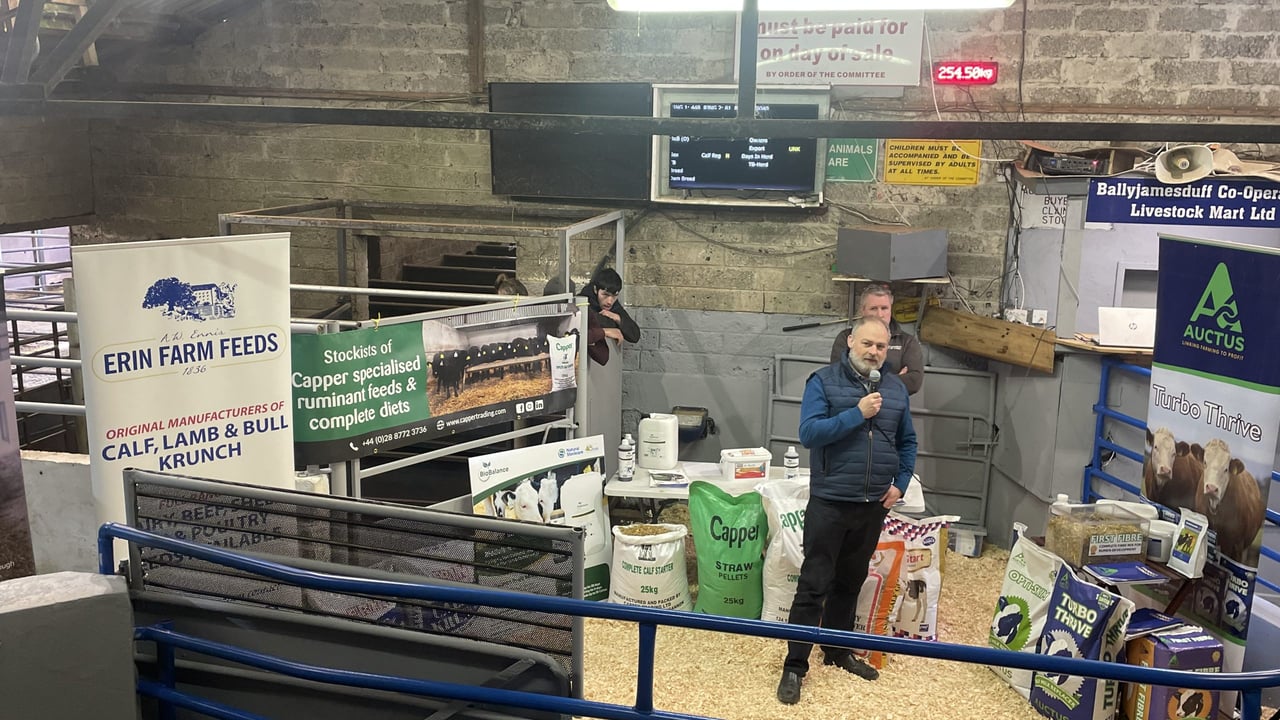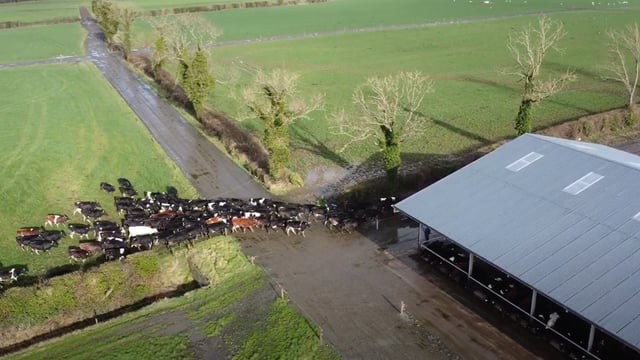'Most efficient weight gain on an animal is at the calf stage'
One of the key messages from the Calf Health and Rearing Open Day at Ballyjamesduff Mart, Co. Cavan, on Tuesday, March 4, was that investing in nutrition at the calf stage will offer farmers the highest returns in relation to Feed Conversion Ratio (FCR).
The calf-rearing stage is a high-cost period of any calf to beef system and farmers often look to cut corners on costs during this phase.
Ruminant technical specialist at A.W. Ennis Feeds, Emmet Duffy, told farmers at the event that no shortcuts should be taken when it comes to feed and nutrition at the calf-rearing stage as younger animals respond better to nutrition than older cattle.
The event also heard from speakers on behalf of Natural Stockcare, Capper Feeds, Micron Agritech, JFC Agri, Auctus, as well as Devenish and Trouw Nutrition.
The ruminant technical specialist explained: "We would look at what we call a Feed Conversion Ratio (FCR) which is how much feed it takes to put on 1kg of live weight.
"In calves, that can be as low as 3:1 so 3kg of ration can give you 1kg of live weight.
"On older finishing animals, you could be up on 6.5:1 and maybe getting to 7:1 in some cases and if you were fattening cows, it could be as high as 12:1, so the cheapest time to put weight on that animal is at the very beginning - as a calf," Duffy added.
He said that investing in quality feed - in particular for young animals "will always pay".
"It doesn't matter if that's calves or pigs or chickens, the quality must be there," he added.
He advised farmers rearing calves to source "a really-good quality milk powder" and said: "Checking the label to see what's in it is quite important and even if you don't know, you can always ask.
"Ensuring that the correct level of vitamins and minerals in there as well is quite important. The likes of Vitamin E is hugely important to the immune system of the animal - there's loads of different ingredients it [milk powder] can be made up from."
The Co. Longford-based nutritionist said: "Once the animals are on milk powder, what you're looking at then is the transition from that to be as smooth as possible to concentrate feed.
"What we would always look at - especially in a calf starter - is that it's very similar in protein and energy to a calf milk replacer so that you end up with very little of a dip in nutrition coming from a milk powder. We would normally make calf diets with full-fat soya."
He said full-fat soya is used because "it contains a lot more energy than the soya most farmers would be familiar with which would be hipro soya. Full fat soya would be about a 17% oil level compared to 2.5% oil level in ordinary soya," according to the ruminant specialist.
"If you're looking for quality, soya is as good as you're going to get in any concentrate. Full fat soya is the Rolls Royce version of soya."
He said: "The longer you can afford the keep them on a calf crunch, the better the animal is going to be.
"What we're after is that transition from milk over to ration is as smooth as possible so the whole point is we don't stress the animals. Stress is what hampers performance. It is the gateway to every disease on the farm.
"We can help cut out that stress by making sure that the animal gets plenty of milk powder and that the transition is as slow as possible onto a concentrate-based diet," he added.





